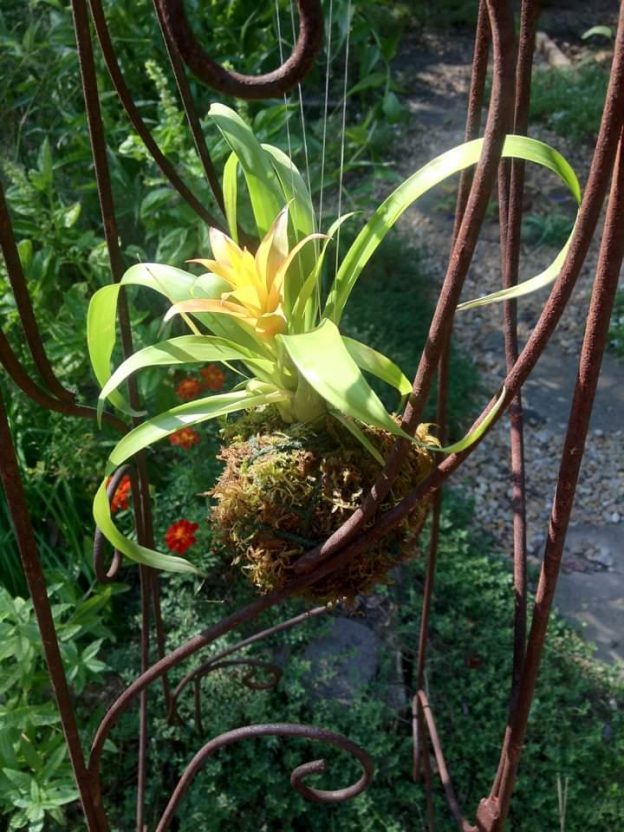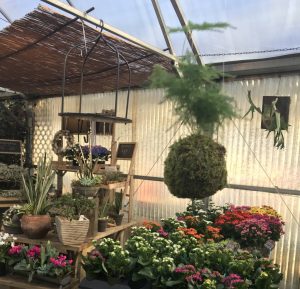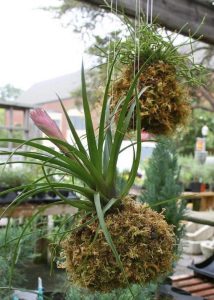 Kokedama: Kokedama is a Japanese bonsai planting technique, dating back hundreds of years. These unique hanging gardens are also called string gardens or moss balls and are incredibly easy and fun to create. Almost any plant can be used, so it’s a great project for experimenting with different plants.
Kokedama: Kokedama is a Japanese bonsai planting technique, dating back hundreds of years. These unique hanging gardens are also called string gardens or moss balls and are incredibly easy and fun to create. Almost any plant can be used, so it’s a great project for experimenting with different plants.
A kokedama garden is created by hanging different plants together in a cluster to create a “garden”. You might choose to group indoor houseplants in a string garden, arrange them outside, or simply have one hanging in a prominent spot.
If you don’t have a lot of space, these gardens are the perfect solution. They can even be used together seated on a beautiful tray or saucer. Kokedama are a simple, beautiful, and artistic way to display plants inside or out.
Over the years this is the method we’ve come up with for creating these simple creations. It’s a messy process but a lot of fun too.
Materials needed:
Peat moss, bonsai soil or clay cat litter (the cheapest, unscented), sphagnum moss, green sheet moss, garden twine, fishing line, latex gloves, container filled with water – optional: cotton string.
Directions for soil mix and sphagnum moss:
In a large container, measure out peat moss and bonsai soil/cat litter. Use 7 parts peat moss to 3 parts soil/litter. Add water, mixing well, until the consistency is of soil that can be formed into a ball that will not fall apart. Set aside. Wearing latex gloves, take a handful of sphagnum moss and moisten it in a container of water; wring out excess.
Plant prep:
Remove as much soil from the rootball of the plant as you can and set aside.
Assembling your string garden:
- Take a handful of the dampened sphagnum moss and wrap it around the roots of the plant. At this point it is optional to wrap the sphagnum with cotton string to secure it. As the plant roots grow through the sphagnum, the cotton string will decompose. I don’t use the cotton string, opting to form the dampened sphagnum around the roots alone.
- Now it’s time to form the soil mixture around the sphagnum wrapped plant. Firm the mixture onto it, taking small amounts and pressing firmly. Try to create a round ball. Set aside.
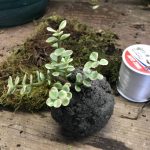
- Take a piece of green sheet moss large enough to wrap around your string garden. Set aside.
- Cut a long piece of garden twine or fishing line – this will be what you wrap around the ball and secure the moss with.
- Wrap the moss around the ball, pulling off excess moss. Center the twine or fishing line under the ball, and begin to wrap it so the moss is secure, then tie off. Cut more if necessary. Wrap it tightly, forming a smooth ball.
- Cut 3 pieces of fishing line to hang your string garden and you’re done!
Maintaining your string garden:
Water your string garden when the ball begins to feel light, or if the plant begins to wilt. As with any other planting, you will begin to get a feel for the timing of watering. Always try to water before your plant begins to look stressed. Soak the ball in a bowl of water until it is completely saturated. If it is hanging inside, squeeze excess water out of the moss ball before re-hanging.
A few plant choices for your string garden:
Inside: ivy, pothos, bromeliad, fittonia, pilea. Outside: herbs, ajuga, carex, succulents.
Some observations I’ve made on string gardens I’ve planted and maintained:
The plants in a string garden do seem to “bonsai” themselves simply by the virtue of having the roots so constricted. The theory behind the moss ball and the plant becoming “bonsaid” is that as the roots begin to grow out of the moss ball the roots actually “air prune” themselves, thus keeping the plant small.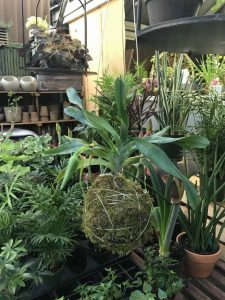
Obviously, with the peat/bonsai soil mix, the ball will dry out, so keep an eye on it. It may work best to try plants that aren’t too demanding at first – bromeliads, succulents, and such.
Play around with the types of string/twine wrap you use – I’ve used light weight colored wire as well for a fun “artsy” look. Another idea is to find a natural netting of some sort to wrap around the moss and tie it on with clear fishing line… there are so many creative possibilities. The bottom line? Choose a plant, and have fun!
If you follow us on Instagram or Facebook you’ve probably seen a new series of shop videos – if not, follow us and check them out! They’re also on our YouTube channel under Oak Street Garden Shop – if you’d like to see more, subscribe!
By Kris Blevons

